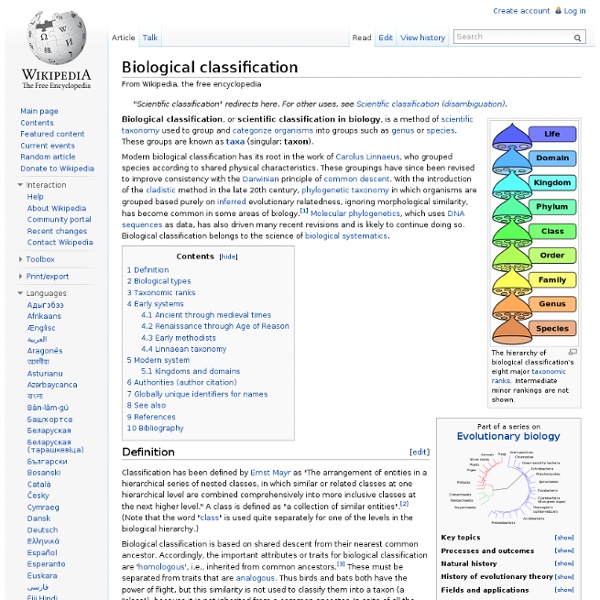Biological classification

Male Seahorses Are Nature's Mr. Mom, Researchers Say
Male seahorses are nature's real-life Mr. Moms -- they take fathering to a whole new level: Pregnancy. Although it is common for male fish to play the dominant parenting role, male pregnancy is a complex process unique to the fish family Syngnathidae, which includes pipefish, seahorses and sea dragons. Texas A&M University evolutionary biology researcher Adam Jones and colleagues in his lab are studying the effects of male pregnancy on sex roles and sexual selection of mates and are trying to understand how the novel body structures necessary for male pregnancy evolved. By doing this, the researchers hope to gain a better understanding of the evolutionary mechanisms responsible for changes in the structure of organisms over time. "We are using seahorses and their relatives to address one of the most exciting areas of research in modern evolutionary biology: the origin of complex traits," Jones said. Male pregnancy also results in a reversal in sex-related behaviors, Jones said.
Creative nonfiction
Creative nonfiction (also known as literary nonfiction or narrative nonfiction) is a genre of writing that uses literary styles and techniques to create factually accurate narratives. Creative nonfiction contrasts with other nonfiction, such as technical writing or journalism, which is also rooted in accurate fact, but is not primarily written in service to its craft. As a genre, creative nonfiction is still relatively young, and is only beginning to be scrutinized with the same critical analysis given to fiction and poetry. Characteristics and definition[edit] For a text to be considered creative nonfiction, it must be factually accurate, and written with attention to literary style and technique. Creative nonfiction writers have embraced new ways of forming their texts—including online technologies—because the genre leads itself to grand experimentation. Ethics[edit] Literary criticism[edit] See also[edit] References[edit] Jump up ^ Gutkind, Lee (2007). Further reading[edit] Johnson, E.
Essay
Essays can consist of a number of elements, including: literary criticism, political manifestos, learned arguments, observations of daily life, recollections, and reflections of the author. Almost all modern essays are written in prose, but works in verse have been dubbed essays (e.g. Alexander Pope's An Essay on Criticism and An Essay on Man). While brevity usually defines an essay, voluminous works like John Locke's An Essay Concerning Human Understanding and Thomas Malthus's An Essay on the Principle of Population are counterexamples. In some countries (e.g., the United States and Canada), essays have become a major part of formal education. Secondary students are taught structured essay formats to improve their writing skills, and admission essays are often used by universities in selecting applicants and, in the humanities and social sciences, as a way of assessing the performance of students during final exams. Definitions[edit] An essay has been defined in a variety of ways.
Related:
Related:



